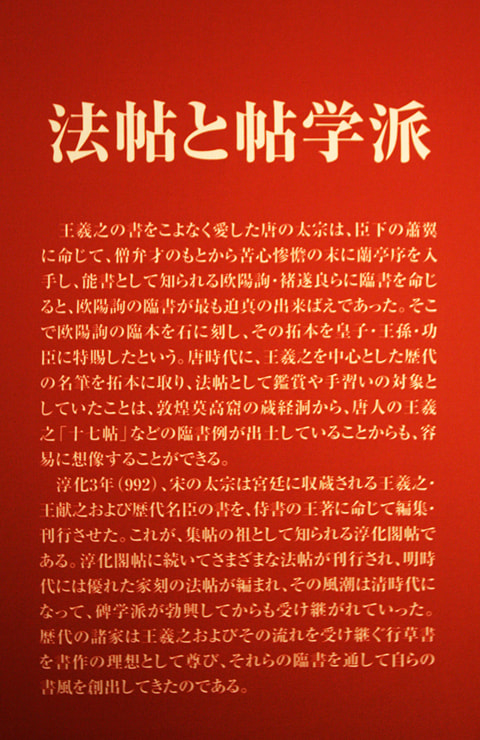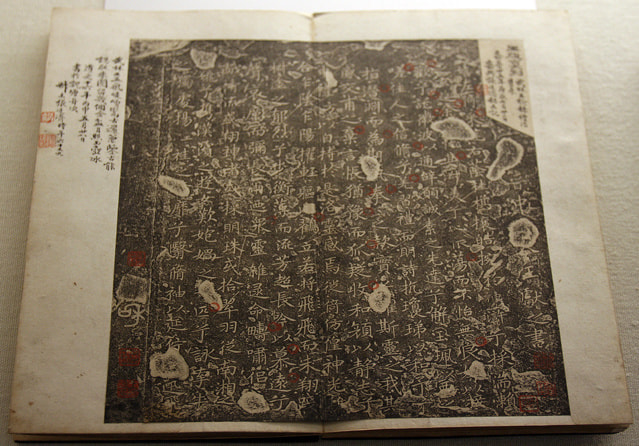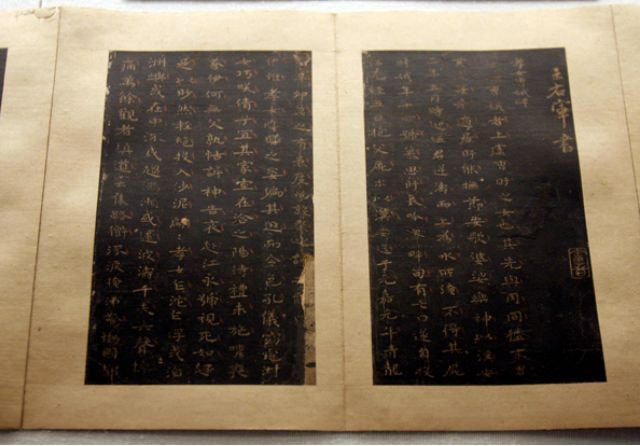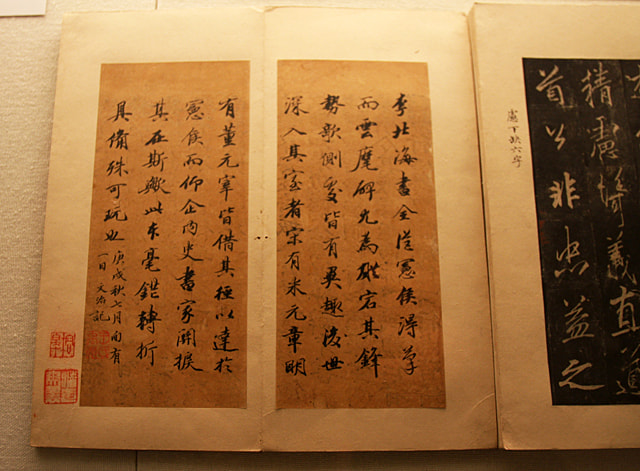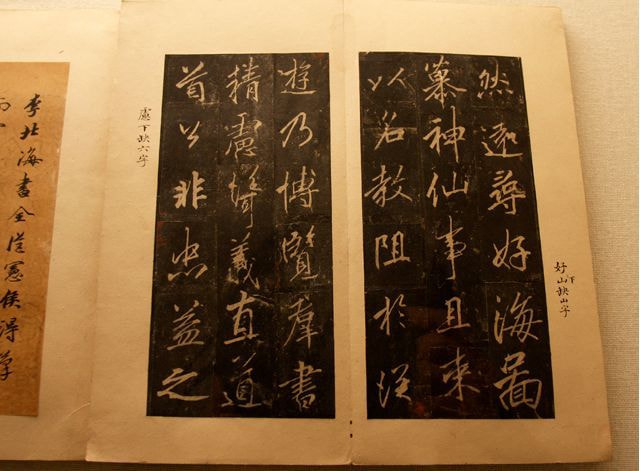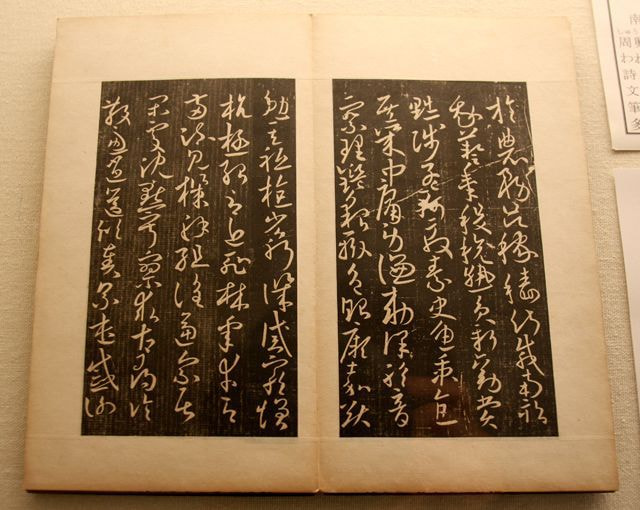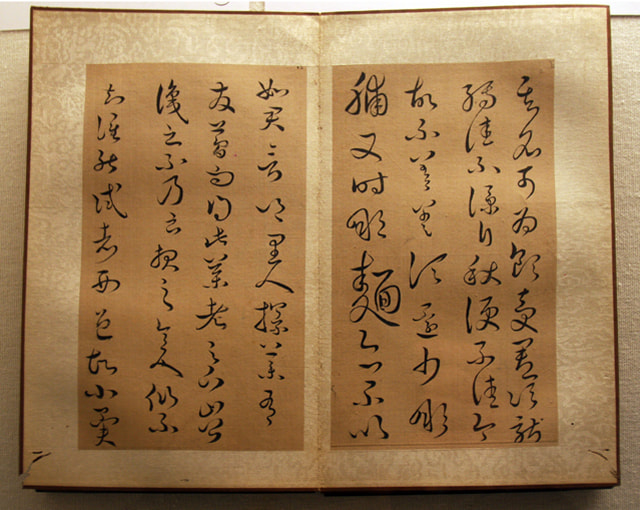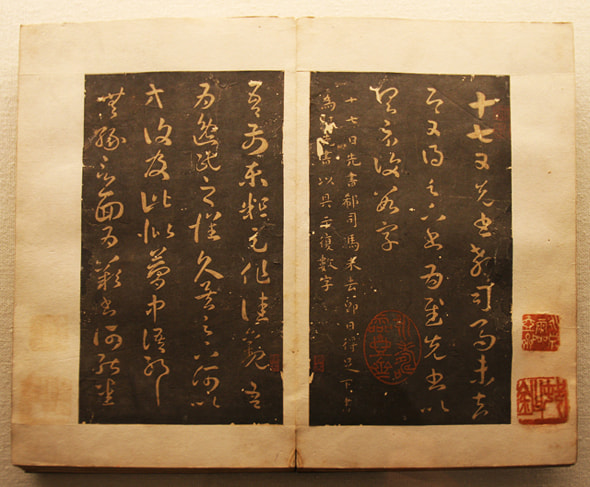
"Rubbing of Shiqi Tie - written after a copy - (rubbing created during the Sung period)" by Wang Xizhi (303? - 361?), Jin Dynasty (4th Century)
There are about 30 letters written in cursive-style by Wang Xizhi, which were collected during the Tang period. It is called "Shiqi Tie" because the letter begins, "shiqi (seventeen) ..." Although, like Wang Xizhi's master piece "Lantingji Xu," it can be categorized into a variety of types, it is said that He Zhizhang (659 - 744) wrote this one after a model in the Tang period.
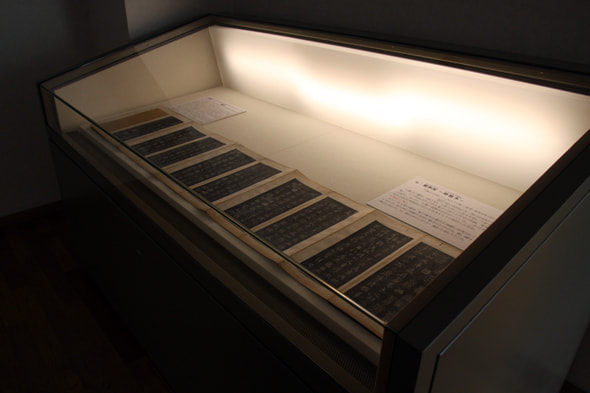
"Lantingji Xu - written by tracing the original -" written by Wang Xizhi (303? - 361?), Jin Dynasty, 353, created by Hobo (16th Century, Ming Dynasty) / carved during the Ming period (16th Century)
"Luo Shen Fu Shisan Hang" written by Wang Xianzhi (344 - 388), Jin Dynasty (4th Century) / year of carving unknown
A rubbed copy of "Luo Shen Fu Shisan Hang," which is said to have been written by Wang Xianzhi.

A rubbed copy of "Luo Shen Fu Shisan Hang," which is said to have been written by Wang Xianzhi.

"Ri Shi Kun stone monument extracts" written by Wang Wen-zhi, Qing Dynasty, 1790
Calligraphy by Wang Wen-zhi, who was a high officer and master of "Jo-gaku," or study based on copies, in the late Qing period.

Calligraphy by Wang Wen-zhi, who was a high officer and master of "Jo-gaku," or study based on copies, in the late Qing period.

"Cursive-style Thousand Character Classic" written by Ouyang Xun (557 - 641), Sui - Tang Dynasty (6 - 7th Century) / year of carving unknown
This calligraphy is said to have been written by Ouyang Xun, one of the three masters during the first Tang Dynasty, who produced excellent block-style calligraphy. "Thousand Character Classic" is said to have been created overnight by Chow Hing-Ji, and is composed of 250 phrases of 4 characters each, which begins, "Tian Di Xuan Huang." It is famous for an excellent composition in which no one character is repetitive.

This calligraphy is said to have been written by Ouyang Xun, one of the three masters during the first Tang Dynasty, who produced excellent block-style calligraphy. "Thousand Character Classic" is said to have been created overnight by Chow Hing-Ji, and is composed of 250 phrases of 4 characters each, which begins, "Tian Di Xuan Huang." It is famous for an excellent composition in which no one character is repetitive.

"Cursive-style Thousand Character Classic" written by Ouyang Xun (557 - 641), Sui - Tang Dynasty (6 - 7th Century) / year of carving unknown
This calligraphy is said to have been written by Ouyang Xun, one of the three masters during the first Tang Dynasty, who produced excellent block-style calligraphy. "Thousand Character Classic" is said to have been created overnight by Chow Hing-Ji, and is composed of 250 phrases of 4 characters each, which begins, "Tian Di Xuan Huang." It is famous for an excellent composition in which no one character is repetitive.



















